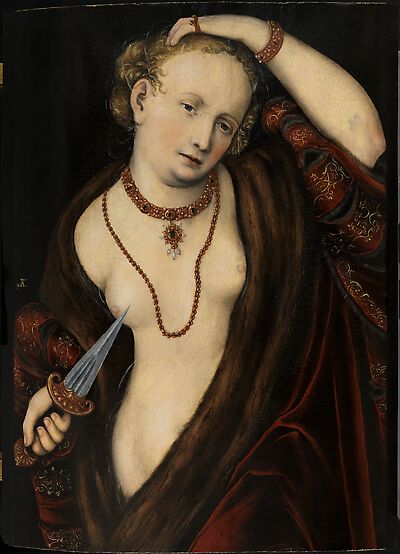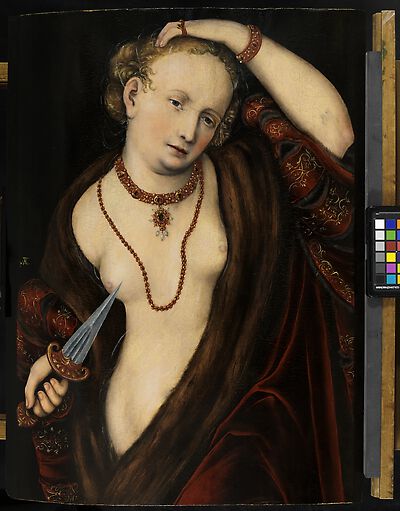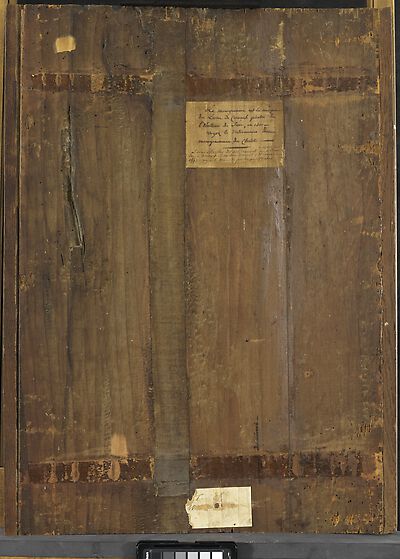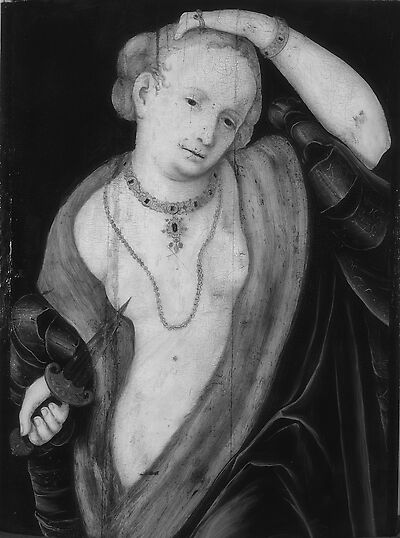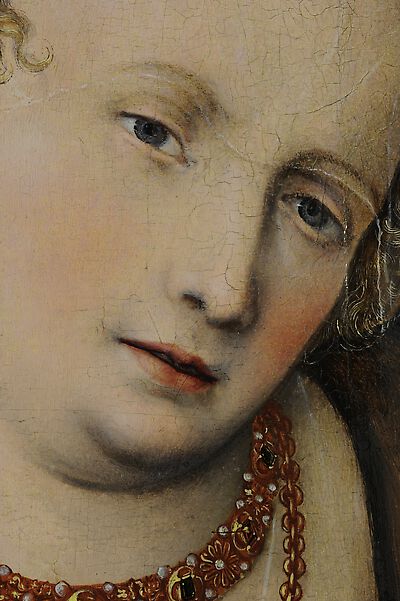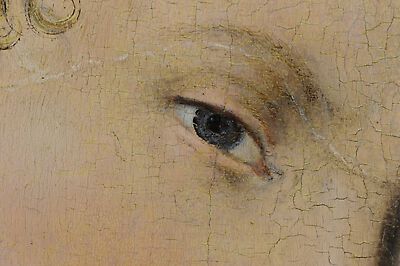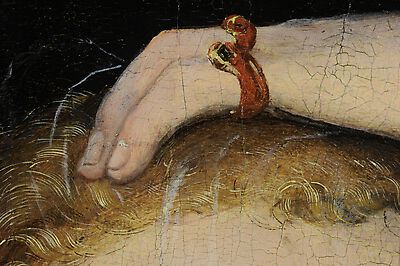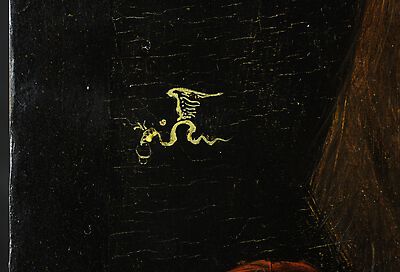The painting depicts Lucretia as a half-length standing nude figure wearing an overcoat. Her head is tilted slightly to the right side of the painting and she gazes into the far distance. With her raised left arm she has placed her hand on her head and in her right hand
The painting depicts Lucretia as a half-length standing nude figure wearing an overcoat. Her head is tilted slightly to the right side of the painting and she gazes into the far distance. With her raised left arm she has placed her hand on her head and in her right hand she holds a short dagger pointed towards herself, slightly touching her right breast. Lucretia wears an embroidered red fur-trimmed overcoat over her shoulders and a transparent undergarment is visible beneath. Her blond hair is pinned up and covered with a thin veil. She wears numerous pieces of jewellery: a thin linked chain, a linked necklace with precious stones and a pendant, an armband and two rings. The background is dark.
[Herrschaft, cda 2012]
According to the legend Lucretia lived in the 6th century BC and was the beautiful and virtuous wife of the roman Collatinus. The roman King's son - Sextus Tarquinius fell in love with her. During a stay in her house Sextus threatened to kill her and shame her honour if she did not surrender to him. After the rape Lucretia had her father and husband vow vengeance and then she stabbed herself. The event led to an uprising in which the royal family was overthrown and the Roman Empire became a Republic.
Depictions of Lucretia who was seen as the epitomy of female virtue, chastity, fidelity and honour enjoyed great popularity, particularly in the 16th century.
[Literature: Bierende 2002, Follak 2002, Livius 1909]
